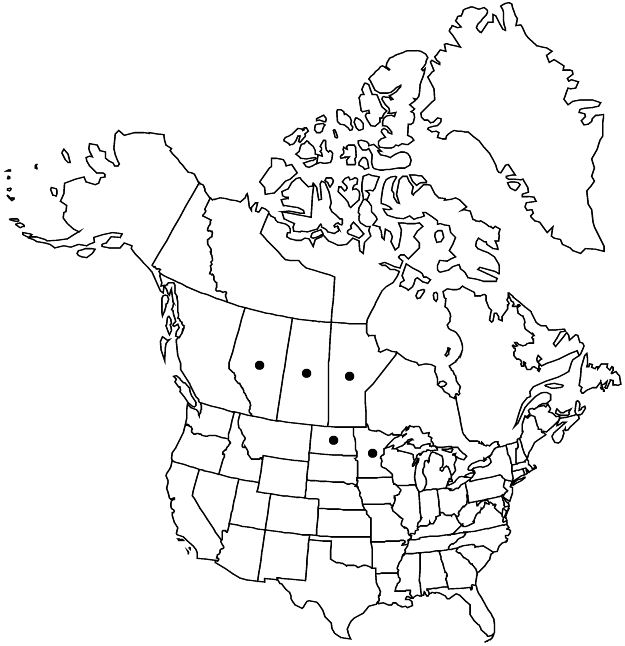Difference between revisions of "Potentilla lasiodonta"
in N. L. Britton et al., N. Amer. Fl. 22: 351. 1908.
FNA>Volume Importer |
FNA>Volume Importer |
(No difference)
| |
Revision as of 23:11, 16 December 2019
Stems ± erect, 2–4 dm. Basal leaves pinnate, 12–20(–30) cm; petiole 5–10(–15) cm, long hairs ± abundant, spreading to ascending, 0.5–1 mm, weak to ± stiff, short hairs abundant to dense, cottony or crisped hairs absent, glands sparse to abundant, often obscured; leaflets 4–6(–9) per side, on distal (1/3–)1/2–3/5 of leaf axis, slightly overlapping, terminal ones oblanceolate to narrowly elliptic, 3–6 × 0.8–1.2(–1.5) cm, margins strongly revolute, incised ± 1/2 to midvein, undivided medial blade 5–9 mm wide, teeth 8–12 per side, narrowly triangular to lanceolate, surfaces ± dissimilar, abaxial grayish, long hairs ± sparse (or not differentiated from short hairs), 0.5–1.5 mm, weak, short hairs abundant to dense, cottony or crisped hairs absent, glands sparse or obscured, adaxial ± green, straight hairs (long and short not differentiated) abundant, spreading to ascending, 0.2–0.5 mm, cottony and crisped hairs absent, glands sparse to abundant, often obscured. Cauline leaves (1–)2–4. Inflorescences 10–40-flowered, congested or elongating in fruit. Pedicels ± 0.1 cm (proximal to 1.2 cm). Flowers: epicalyx bractlets narrowly ovate-acuminate, (3–)4–8(–10) × 2–3 mm, lengths 1–2 times sepals, margins ± revolute; hypanthium (4–)5–10 mm diam.; sepals 3–5 mm, apex acute to obtuse, abaxial surfaces: venation moderate, glands ± abundant, obscured to evident; petals pale yellow, 3–5 × 2–4 mm, lengths ± equal to or shorter than sepals; filaments 1–1.5 mm, anthers 0.5–0.8 mm; carpels 80–90, styles papillate-swollen in proximal 3/4+, 1–1.2 mm. Achenes ± 1 mm, ± rugose. 2n = 14.
Phenology: Flowering summer.
Habitat: Sandy sites in prairies
Elevation: 300–1100 m
Distribution

Alta., Man., Sask., Minn., N.Dak.
Discussion
Potentilla lasiodonta is a diploid relative of tetraploid P. pensylvanica, sharing similar velvety vestiture of dense short hairs, pinnate leaves, and epicalyx bractlets with revolute margins. The species differs in having larger epicalyx bractlets and less deeply incised leaflets. Plant height and leaf size are at the upper range of P. pensylvanica, and populations are evidently restricted to sandy substrates. Occurrence in Manitoba is based on B. L. Kohli and J. G. Packer (1976); no vouchers are in WIN. At least one collection from southeastern British Columbia (Brown 779, MO) approaches P. lasiodonta, but it is insufficient by itself to serve as a provincial record.
The fundamental ploidy and epicalyx distinctions of this species were established by B. L. Kohli and J. G. Packer (1976), who proposed the name Potentilla finitima. As noted by J. Soják (1994), the type of P. lasiodonta is the same entity. Potentilla atrovirens Rydberg and P. pensylvanica var. arida B. Boivin have sometimes been applied to this taxon; the types of both names fall within the circumscription of P. pensylvanica in the narrow sense (Packer, pers. comm.).
Selected References
None.